Ten brainstorming exercises to help generate future-forward ideas
Reframe, rethink, and reimagine the present to design the future
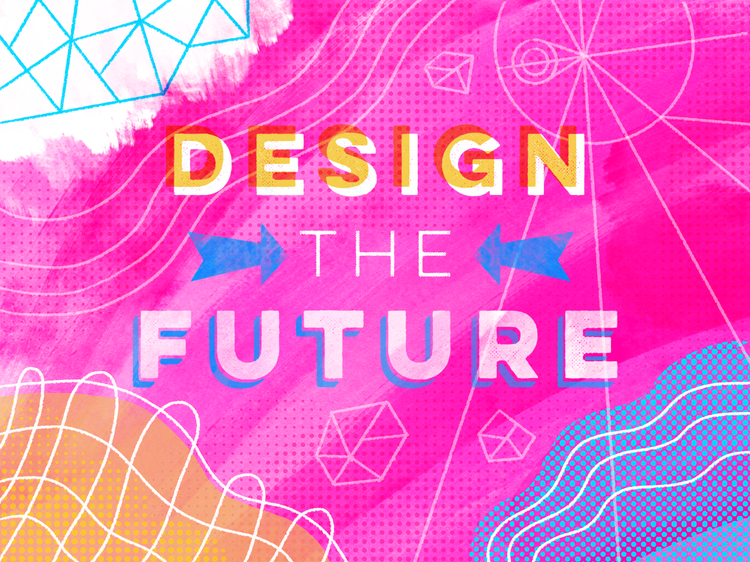
Illustrations by Matthew Carlson
The future continues to come in waves with innovation happening in cycles: People try things. They fail. Someone tries again. And eventually things move forward.
Like many people in design, I think often, and deeply, about technology, innovation, and designing the future. Over the years I’ve created a handful of exercises that help me reframe, rethink, and reimagine the present so that I can think ahead. I hope they spark your imagination and help you generate your next big idea in a future-forward and future-friendly way.
1. Build a time machine
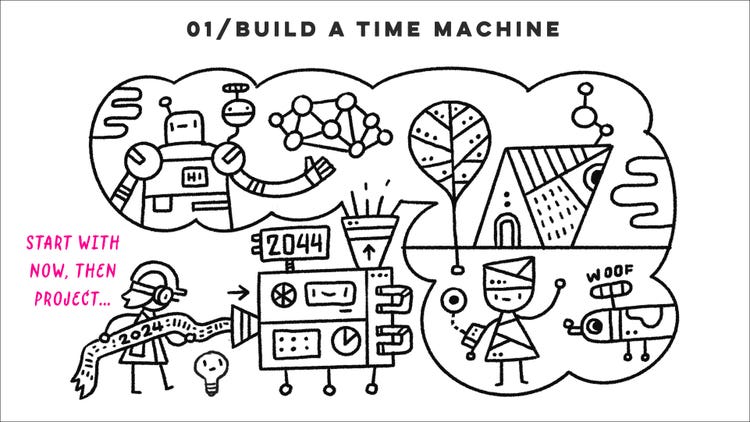
Start with now and map back. Look at all the things in your life—the way you are, the way you work, the way you consume products and media, and the way you travel—and consider the remarkable amount of change and acceleration that’s happened in just the last five years. Then look at the trends that affected everything and consider what might happen if these same things keep moving forward. What might it look like four years from now (or ten) if phones get smarter, or AI becomes more pervasive? With enough time and focus, your brain can begin to imagine “what if?” and envision a future filled with innovation that still feels familiar.
2. Meet your future customers
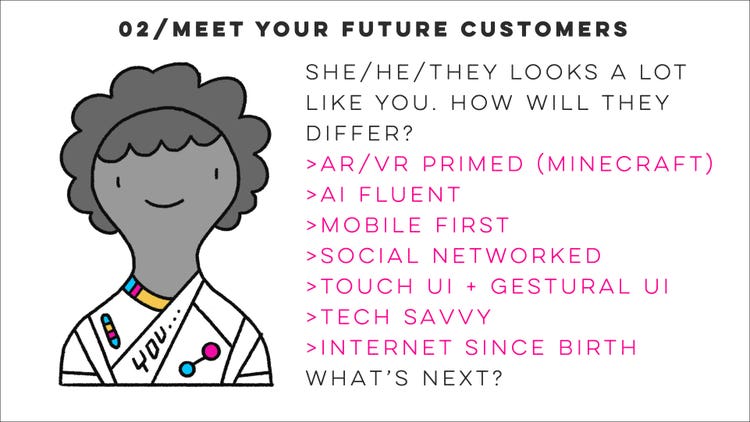
Use this exercise to imagine the type of person that will be using your idea. Think about what the "firsts" might be for a future set of customers that's AI fluent or comfortable manipulating 3D objects in 3D spaces. How might that play out in a more artificial or virtual reality future? What will be the next big breakthrough that might pull today's technologies together in a way that's transformative? That will be what your future customer wants.
3. Imagine future jobs
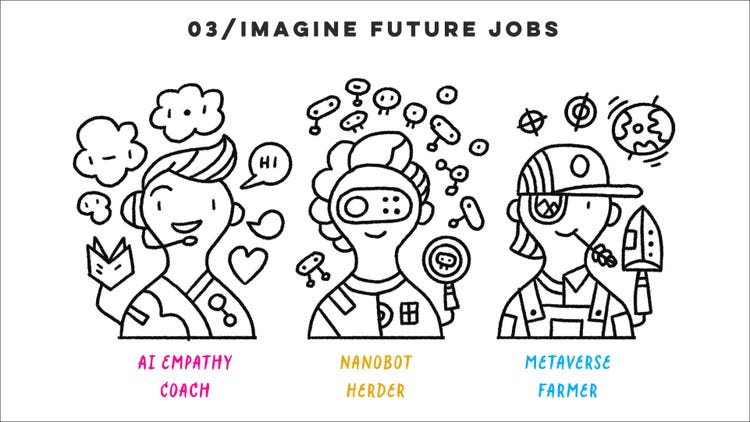
Jobs are a sign of future need. Maybe we’ll need AI empathy coaches to help AI to understand human beings so that it can create more thoughtfully than it does now (that’s probably not even a future job, that's a today job). Or maybe we'll need nanobot herders to guide tiny biological robots toward completing complex tasks, or metaverse farmers to grow artful, bespoke, crops for customers in the metaverse. Think about today’s technologies, how they might evolve, and what jobs might be needed to support them.
4. Think of future artifacts
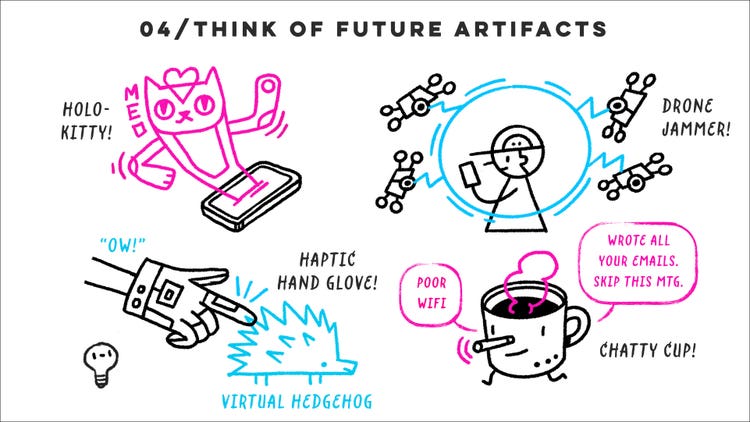
What will be in everyone’s go-bag four years from now? Maybe a haptic glove people carry in their pockets so they can interact in a physical way with an augmented reality object, or a smart cup that can simplify office life by reading and responding to email and checking a daily calendar while also keeping coffee hot. When designing for the future, think about the tools, technologies, and devices people will want to be sure to have with them as they move about their days.
5. Think in atoms
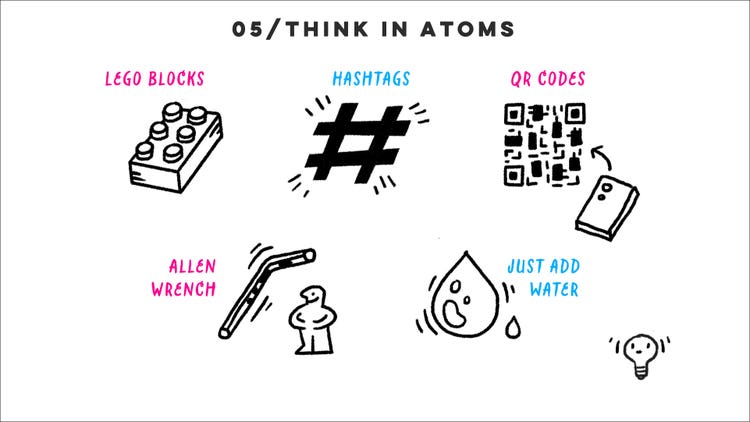
Because the most powerful tools are often the simplest, getting at the essence of things is central to design thinking. Hashtags are the perfect metaphor; this simple visual symbol acts as the glue for whatever someone is thinking and connects it to an entire community. And what about LEGO blocks? Every piece, every part, fits effortlessly into all others. Underlying every innovative idea is a basic element—uncover that, then build from there.
6. Go on a field trip
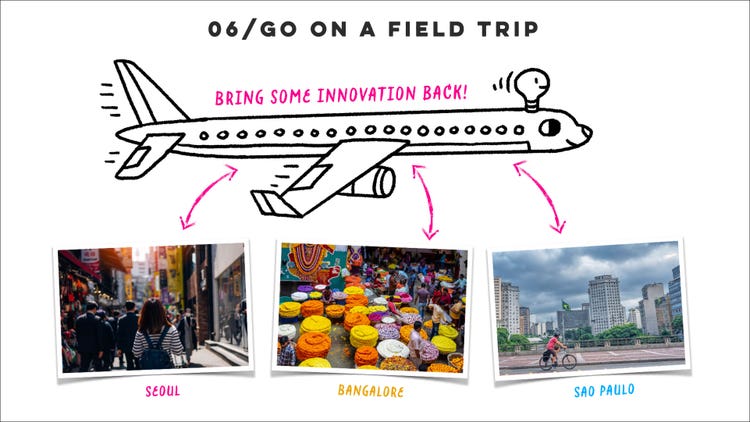
Eight years ago, a friend of mine visited family in Shenzhen, China. When she got back, she said, "People are doing everything on their phones. No one touches a computer. And no one carries cash." My response, "That sounds unrealistic. Surely that will never happen in the US.” But how many of us never pay with cash, and use our phones for everything? What she saw and the insights she brought back were transformative. Travel as much as you can and soak up every bit of social, cultural, and commercial innovation, before it seeps into your part of the world.
7. Try magical thinking
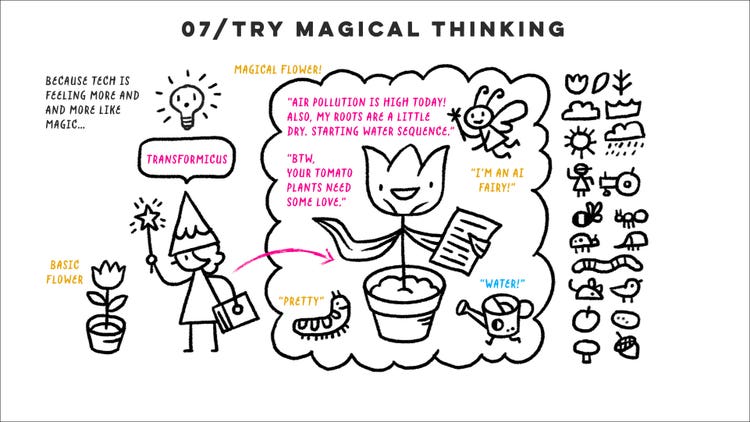
Even now what’s possible with technology sometimes feels like magic. A great way to design the future is to imagine a common object with magic added. What if there were no restrictions on what you could create? What if you could transform a simple plant into a smart plant that could tell you air pollution is high, or that it needs water, or one that could communicate with all the other plants on a farm and bring that information back to you? No matter how you use it, magical thinking helps generate fantastical ideas that seem improbably... or even impossible.
8. Explore mashups
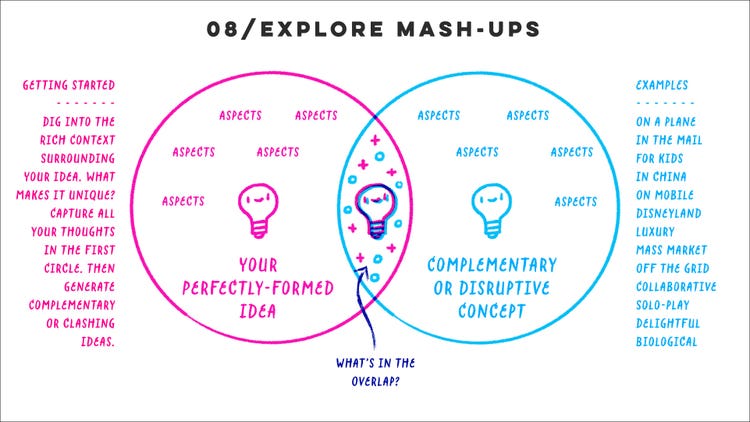
A common way to spark innovation is plain old mashups—Venn diagrams—where your current idea goes in one circle, a complementary or disruptive idea goes in another, and inventive ideas happen in the overlap. Take a perfectly formed idea that’s probably familiar to most people: laundry detergent. In circle one, list everything you know about laundry detergent. In circle two, list ways to reduce waste (less packaging, compostable materials, easy to ship). In the overlap, where the list in circle two impacts the list in circle one, is where innovation (like laundry detergent sheets) is born.
9. Play utopia/dystopia

Imagine the best scenario for an idea. Then imagine the worst. What would happen if you did everything right and your idea became a force for good and positively transformed society. Alternatively, what would happen if your idea were used in an unexpected way or a decision you made ended up hurting people? Technology is never neutral: Design a future utopia through a dystopian lens. Consider the safeguards and ideas you'll need to implement to prevent bad things from happening.
10. Help people adapt

The most compelling reason to design for the future is to think about how we can meaningfully help people adapt to innovation. Whether it’s for a child, a grandmother, or someone who just doesn’t have the same access, instead of considering how to layer on as much technology as possible, use this exercise to consider how to include it in ways that feel human, accessible, inclusive, and fair. Maybe the best way to adapt technology for your grandmother is to bring it down to a human scale—to create a coffee cup that reminds her to exercise, or a flower that lets her know it’s sunny outside and maybe a good time for a walk.
Make the future better
Some final thoughts about designing the future: Instead of benefiting a few, benefit many. Instead of unlocking wealth, unlock human potential. Instead of consuming immense resources, grow sustainably. Instead of building new walls and silos, make the world feel more open. Instead of making tech more complex, make tech clearer. Instead of controlling innovation, democratize innovation. And instead of making the future feel alien, make the future feel human.
Adapted from Matthew Carlson’s Design the Future presentation for UC Berkeley's A. Richard Newton Lecture Series.